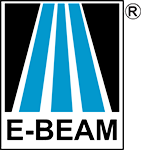Advanced R&D
Have an idea? We’ll be your trusted innovation partner to help make your idea a reality.
Work with Us
At E-BEAM Services, we don’t have any products ourselves–we enable YOU to make new or improved products.
E-BEAM has a long track record as a partner, trusted advisor, and service provider for the manufacturers of a wide variety of industrial products, consumer goods, and medical devices across the nation.
Our relationship can start with a non-disclosure agreement before we have our first substantial technical discussion. We can provide you with a standard non-disclosure agreement, or work with your agreement. We can make it happen fast – E-BEAM doesn’t need a lot of legal input because we work within confidential relationships all the time.

How It Works

Your E-BEAM representative will walk through a brief overview of your goals

We can help you design the experiment and tell you what it will cost before we get started

Based on our years of experience, E-BEAM can help you interpret experimental outcomes and help you overcome challenges along the way

We’ll also work with you to determine a configuration that minimizes future production costs for the product

Once you have developed your proprietary product, E-BEAM uses our high-volume electron beam accelerators for high-volume production
What materials respond well to electrons?
The various versions of polyethylene crosslink readily, often turning a commodity plastic part into a specialty product. Some fluoropolymers and PVC compounds also are used in commercial crosslinking applications. Other widely used polymers, like nylon, crosslink best when compounded with a crosslinking promoter.
Some polymer materials undergo chain scissioning. That turns out to be valuable in the production of Teflon® micro-powders, and in other applications.
Some crystal structures undergo valuable changes under electron beam irradiation. Diodes, transistors, and other semiconductor products can be improved, and gemstones such as topaz, rubelita, and diamonds are colored with electron beam irradiation.
Existing Applications
- PEX pipe (now used in new home plumbing 5x as often as copper!)
- Heat shrink tubing
- Heat shrink films
- Gaskets, electrical connectors, and other molded parts
- High performance wire and cable insulation
- Closed cell foam
- Bulk resin pellets
- Hydrogels
- PTC heaters and switches
- Semiconductors
- Food products
- Gemstones
- Advanced composites
- Auto tires
- Disposable medical devices
- Pharmaceuticals
Are you ready to convert to E-beam technology?
Contact us to speak with one of our Technical Services reps, or visit our extensive reference library to learn more E-beam services.
